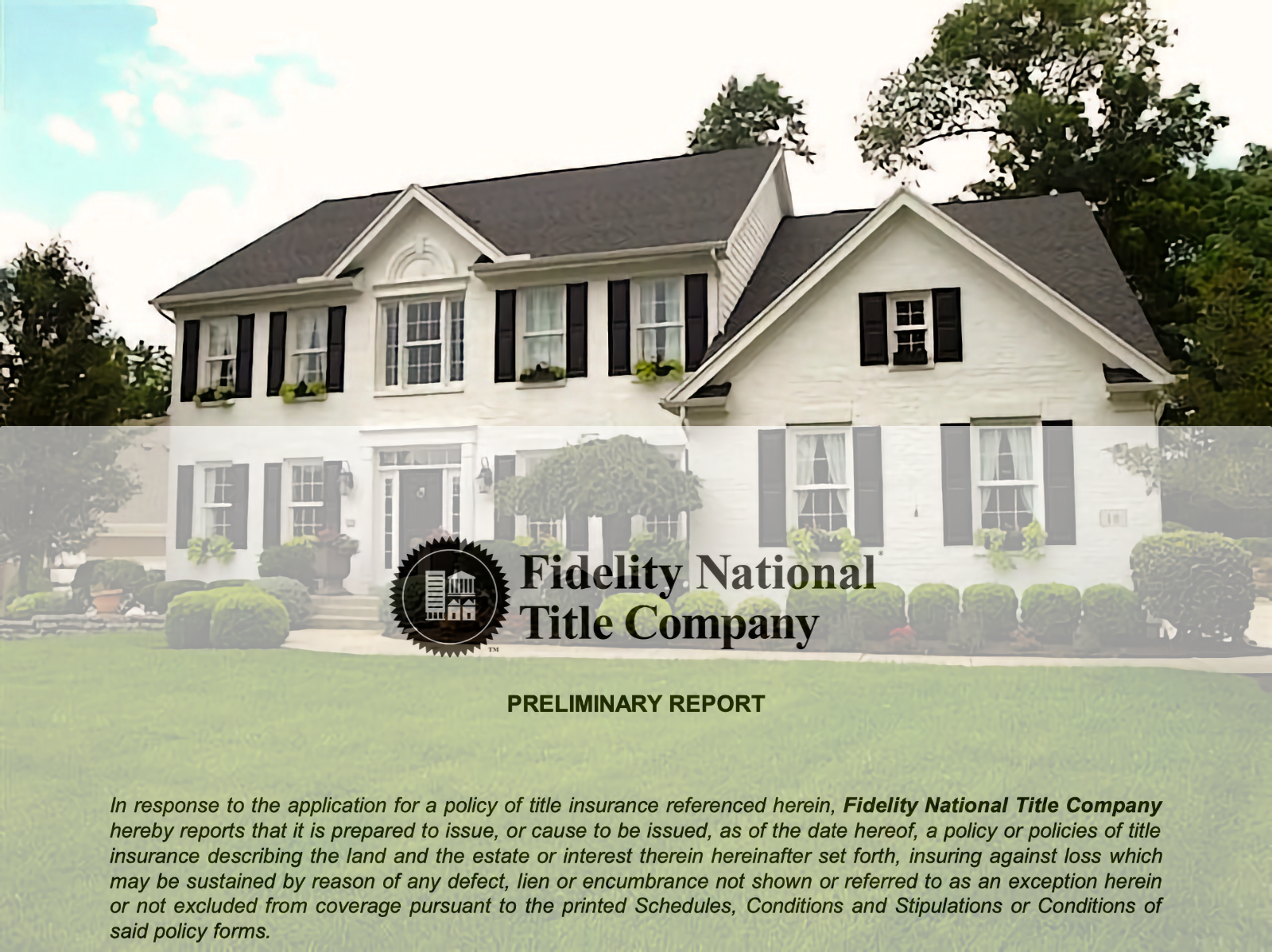Understanding how to read a California preliminary title report can be a daunting task for many, especially for those unfamiliar with Bay Area real estate transactions. This document, which provides a detailed history of a property, plays a critical role in the closing process of a real estate transaction. However, with the right guidance and knowledge, navigating through a title report can be a smooth journey.
In this article, we will dissect the elements of a title report, elucidate its importance, and provide a step-by-step guide on how to read a title report in California.
Introduction to Title Reports
A title report, akin to a background check for a property, is a formal document that outlines the legal status of a property. It details the property’s ownership history and flags any potential issues or ‘clouds’ on the title such as liens, easements, or back taxes. The report is prepared by a title company after conducting a thorough search and examination of public records related to the property.
The Importance of Reading a Title Report
Reading a title report enables potential buyers and real estate professionals to gain an in-depth understanding of the property’s past and present status. It helps uncover any existing issues that could hinder the sale or purchase of the property. Additionally, it serves as a vital tool for lenders and insurers to evaluate the risks associated with lending or insuring the property.
How to Get a Preliminary Title Report
When you agree to list a home for sale with a Bay Area REALTOR, one of the first things that agent will do is open escrow with a local company. At the time, the escrow company will order the preliminary title report. There is no cost to the seller or the agent for this preliminary title report, and while there is no fee at this point, it’s a very valuable service because it will alert the listing agent about many potential title issues that could affect or even derail the sale down the road. The preliminary title report may take anywhere from 1 to 5 days to receive, based on how long it’s been since the most recent title report for that property was pulled, and how busy the title company is at the time.
Components of a Title Report
A title report typically consists of two main sections – Schedule A and Schedule B.
Schedule A
Schedule A provides essential information about the property and transaction. It verifies the sale price, the buyer’s and seller’s names, and provides a legal description of the property in question.
Schedule B
Schedule B contains a list of exceptions or issues that the title insurance will not cover. These may include special exceptions, monetary costs associated with the property, important property matters, and potential ‘red flags.’ It is very important to familiarize yourself with everything that is excepted from your title insurance. These days, the excepted items will typically be hyperlinked in the report to download a recorded document (e.g. CC&Rs, an easement, etc.) which you should read thoroughly.
Understanding the Preliminary Title Report
A preliminary title report is a precursor to the actual title report. It is prepared shortly after a title order has been opened, outlining the conditions under which a title insurance policy would be issued. It gives an early indication of any potential issues that need to be resolved before closing the transaction. The actual title report itself will be created when the title insurance policy is bound at close of escrow.
Reading Title Report: Step by Step Guide
Reading a title report may seem daunting initially, but with a systematic approach, it becomes a manageable task. The following steps can guide you through the process:
-
Start with Schedule A: Verify the sale price (once a buyer has been put into contract, an updated preliminary title report will be issued if it was opened by the listing agent as “buyer to come”), buyer’s and seller’s names, and the legal description of the property to ensure that the report pertains to the correct property.
-
Move to Schedule B: Review the special exceptions and monetary costs associated with the property. Note down any important property matters such as easements or covenants, lies, and identify potential ‘red flags.’
Important Sections in a Title Report
While all sections of a title report carry their importance, some sections warrant special attention due to their potential impact on the property transaction. These may include:
-
Easements: These are rights granted to another party to use a portion of the property for specific purposes.
-
Liens: Liens are legal claims against the property due to unpaid debts. They need to be cleared before the transaction can be closed.
-
Covenants, Conditions, and Restrictions (CC&Rs): These impose limitations on the use of the property and should be carefully reviewed.
Identifying Red Flags in a Title Report
Red flags in a title report are potential issues that could affect the transaction or future ownership of the property. These may include bankruptcy filings, pending legal actions, access issues, liens, and foreclosures.
Clearing Title Issues
Clearing title issues is a crucial part of the closing process. This may involve paying off liens, settling legal disputes, or obtaining necessary permissions for easements or restrictions.
Title Insurance: An Essential Safeguard
Title insurance provides protection against any unforeseen issues that may arise after closing, which were not identified during the title search. It serves as a safeguard for the buyer’s investment and is highly recommended for all real estate transactions. Title insurance is not required by law, however if you are getting a mortgage loan on the property, your lender will require that a title insurance policy be in place – for the lender, and for you.
Final Thoughts
Understanding a California preliminary title report is essential for a smooth and successful real estate transaction. While it may seem complex, a systematic approach, and assistance from real estate and title professionals can make it a straightforward process.
Being able to read a title report is a valuable skill in the real estate world. It not only empowers you to make informed decisions but also guards against potential risks associated with property transactions. Thus, a title report serves as a roadmap to your real estate journey, providing a clear picture of the property’s past, present, and potential future issues.




